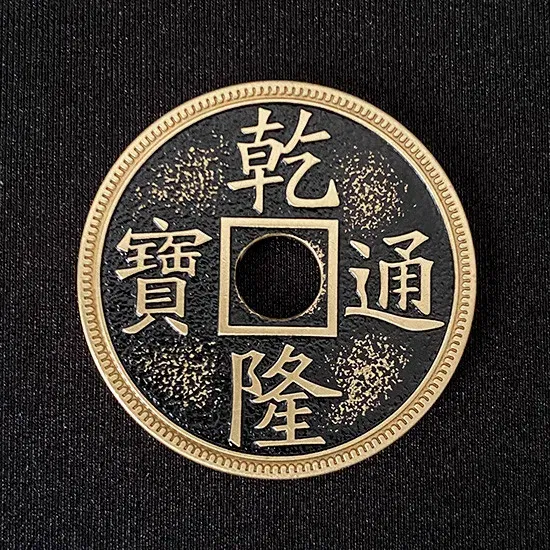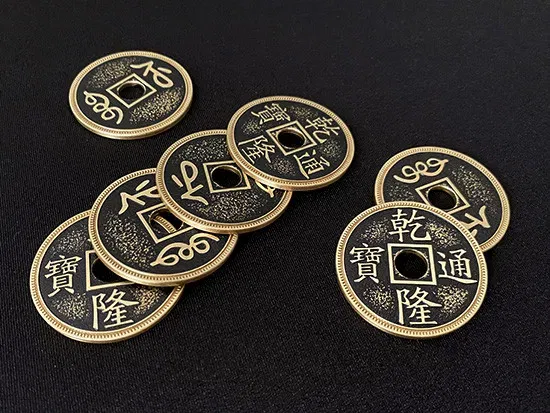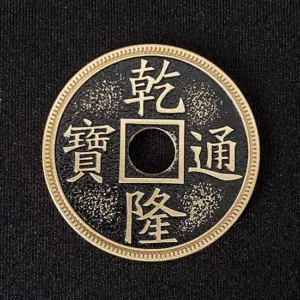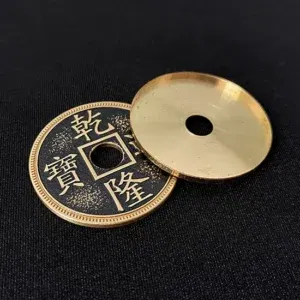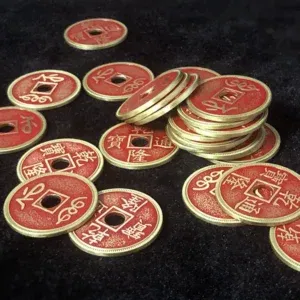Chinese Palace Coin (Brass) (Morgan Dollar Size)
£4.00
A part of Chinese ancient coins came from the imperial palace, and they are called palace coin. The use of palace coin originated in the Tang Dynasty. In the Qing Dynasty, the development of palace coin reached its peak. At that time, palace coins were cast in an official furnace and mainly used to decorate the festival celebrations of the imperial palace. In the twelfth lunar month, the casting department would send a batch of palace coins into the imperial palace as pendants for lanterns and reward some nobles. The palace coin in the Qing Dynasty usually has a year name on the head. The biggest difference between palace coin and folk coin is that the brass used for palace coin is more refined and the production is more exquisite.
This Chinese Palace Coin is made of refined brass with special black craftsmanship.
These coins work well for manipulation, matrix routines, Charming Chinese Challenge, Spellbound and Three Fly – nearly any coin effect.
No instructions.
Price is per coin
27 in stock
Chinese Palace Coin (Brass) (Morgan Dollar Size)
£4.00
A part of Chinese ancient coins came from the imperial palace, and they are called palace coin. The use of palace coin originated in the Tang Dynasty. In the Qing Dynasty, the development of palace coin reached its peak. At that time, palace coins were cast in an official furnace and mainly used to decorate the festival celebrations of the imperial palace. In the twelfth lunar month, the casting department would send a batch of palace coins into the imperial palace as pendants for lanterns and reward some nobles. The palace coin in the Qing Dynasty usually has a year name on the head. The biggest difference between palace coin and folk coin is that the brass used for palace coin is more refined and the production is more exquisite.
This Chinese Palace Coin is made of refined brass with special black craftsmanship.
These coins work well for manipulation, matrix routines, Charming Chinese Challenge, Spellbound and Three Fly – nearly any coin effect.
No instructions.
Price is per coin
27 in stock

